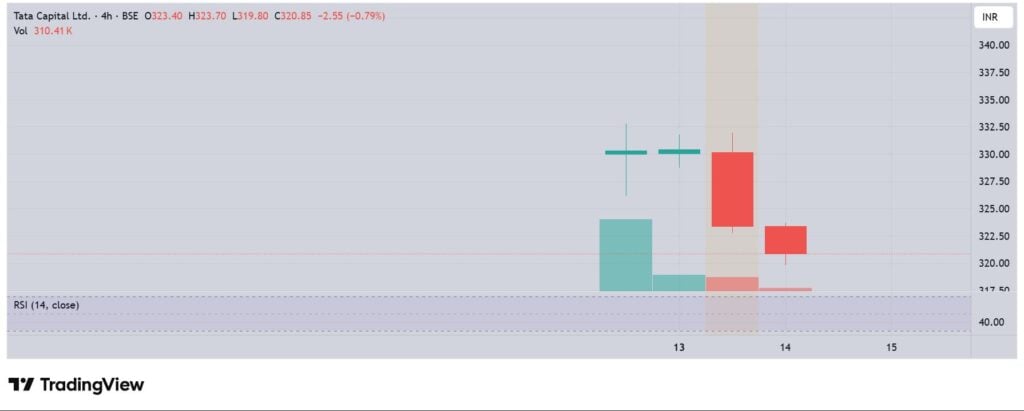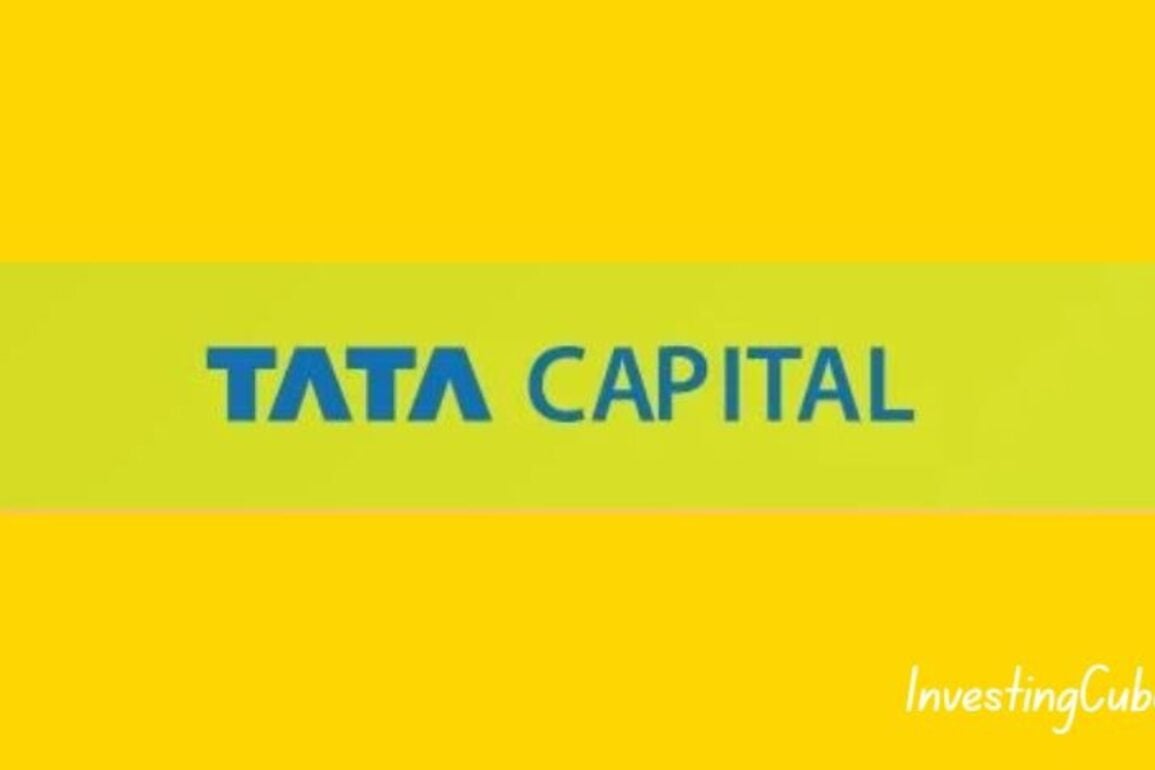- Tata Capital shares barely moved up 1% on its first day of trading, after muted IPO. This has investors concerned about its growth prospects.
Tata Capital’s Initial Public Offering (IPO) finally made it to the public market, but the reception was rather quiet. Even though it was India’s biggest IPO of 2025, the shares only went up a little over 1% on their issue price when they started trading on the stock market.
The stock was down by 3% at the time of writing in Tuesday’s intraday session, trading at ₹320, which is below the issue price of ₹326. But why did investors not respond? And what are the stock’s chances of recovering in light of potential risks?
Why Tata Capital’s First Day Was So Quiet
The weak listing can be explained by a combination of circumstances that affected the whole market and the company itself, which made investors less excited, especially about short-term outlook:
Aggressive Valuation: Tata Capital’s IPO didn’t get much interest; it was only 1.95 times oversubscribed, and qualified institutional buyers (QIBs) were only moderately interested, at about 2.5 times. Analysts attribute the weak performance to the high valuations of the offering. At the top of the price range, Tata Capital (BSE: TATACAP) traded at a price-to-earnings (P/E) ratio of 34.5, which is far higher than the industry average of about 23.3.
Also, many thought that Tata Capital’s Price-to-Book (P/B) multiple was fair or perhaps a little aggressive compared to its listed counterparts in the Non-Banking Financial Company (NBFC) industry. While it was cheaper than Bajaj Finance, the leader in this sector, it was still more expensive than certain comparable companies like HDB Financial Services.
Market and group sentiment: Market sentiment was also very important in influencing Tata Capital share price trajectory. India’s IPO market as a whole was saturated, and investors were more interested in high-growth tech or consumer bets like LG Electronics India’s simultaneous offering, which got more attention.
Also, investors were likely worried about how things are going on at Tata Group’s boardroom. This has largely been in the form of recent changes in leadership and scrutiny of governance.
Broader economic problems, such as slowing credit growth in the NBFC sector and the Reserve Bank of India’s (RBI) stricter rules on lending practices, made investors even less interested. Also, the group’s last IPO, Tata Technologies, did poorly when it went public, which probably affected how retail investors felt.
Competing Mega-IPOs: The timing of the IPO was hard because it happened at the same time as another big public issue, like LG Electronics India, which drew a lot of investor interest and money. Because investors didn’t have enough money to go after a lot of major issues, they had to be picky, and that took some demand away from Tata Capital.
Low Subscription Levels: The IPO’s overall subscription of about two times (1.95x) was good but not great for a Tata Group company, especially when compared to the oversubscription levels witnessed in other recent major issues.
Even while Qualified Institutional Buyers (QIBs) were quite interested, the important retail piece was only subscribed roughly 1.1 times. This shows that individual investors who are looking for a quick return are not really excited about this.

Tata Stock’s 4-hour chart on the second day of trading. Source: TradingView
Prospects for a rebound
Tata Capital has a lot of competitive advantages because of its Group history, such as a high level of public confidence and a credit rating of “AAA/Stable.” This higher rating gives the company access to a lot of cheap financing. That is very important for generating money in the lending business, especially when compared to other companies with lower ratings.
The Tata brand is trusted, and the RBI’s recent regulatory changes have made it easier for NBFCs to borrow money. This puts the company in a good position to rebound as the economy stabilises.
Diversification also brings stability. Tata Capital has a very diverse portfolio that includes more than 25 different products for retail finance, small and medium-sized businesses, and corporate loans. Almost 80% of its loans are secured, and that is quite significant. This means that it has a high asset quality profile and one of the lowest Gross NPA ratios in the sector (around 2.1%). This diversity and focus on secured loans protect it from concentration issues and keep it stable.
What Are the Risks?
Investors who want to see past the short-term noise need to be aware of certain risks that come with the NBFC sector and the company. A downturn in the economy could hurt AUM growth and asset quality. Also, worsening macro conditions could make it harder to lower the cost of credit in auto finance.
There are also risks from regulatory uncertainties, greater credit costs, and delayed NIM growth. Another thing to think about is the valuation. At current levels, Tata Capital stock is not “cheap” compared to its peers, and any further supply from Tata Sons’ stake decrease could limit gains. Also, competition from fintechs and changes in interest rates make the market more volatile, which adds to the anxiety.
A rebound depends on sustained AUM growth, improving profitability metrics, and leveraging the group’s AAA credit rating.
Its core strength is being part of Tata Group conglomerate, a highly diversified, and majority secured loan book, minimizing concentration risks.
The key risks include a potential economic slowdown, merger-related asset quality issues, and high valuations could hinder Tata Capital’s recovery, alongside regulatory and fintech competition.
This article was originally published on InvestingCube.com. Republishing without permission is prohibited.


